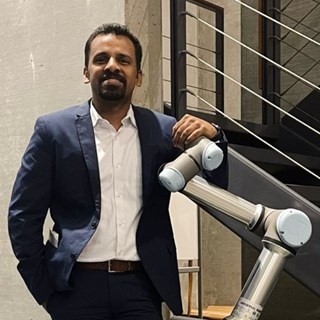Sougandh K.M., Country Manager of India, Universal Robots
India recently became the most populous country in the world. It has one of the world’s largest markets and is well on its way to becoming a powerhouse of manufacturing. Manufacturing exports totaled USD 418 billion in 2022, having grown by 40% in a single year
National policies support a tech-driven economy
The explosive growth of manufacturing in India is supported by forward-looking policy makers A number of national initiatives have been introduced to support the sector, including Make in India, Make for the World and the Production Linked Incentive (PLI) scheme, launched in 2020 to boost manufacturing, self-reliance and export revenue.
Under the PLI scheme the government provides financial incentives to manufacturers who increase their production output in specific sectors such as electronics, pharmaceuticals and automotive. These incentive schemes are supporting even small and medium sized businesses – which contribute 30% of GDP – to invest in technology. The public message is clear: technology can and will help industry become more productive.
The country as a whole is undergoing rapid digitization and is well aware of the benefits of automation because of the government’s promotion of Digital India and Industry 4.0. In 2021, India ranked number 10 globally in new robot installations. That openness to technology looks set to take manufacturing in the country to a whole new level of productivity.



